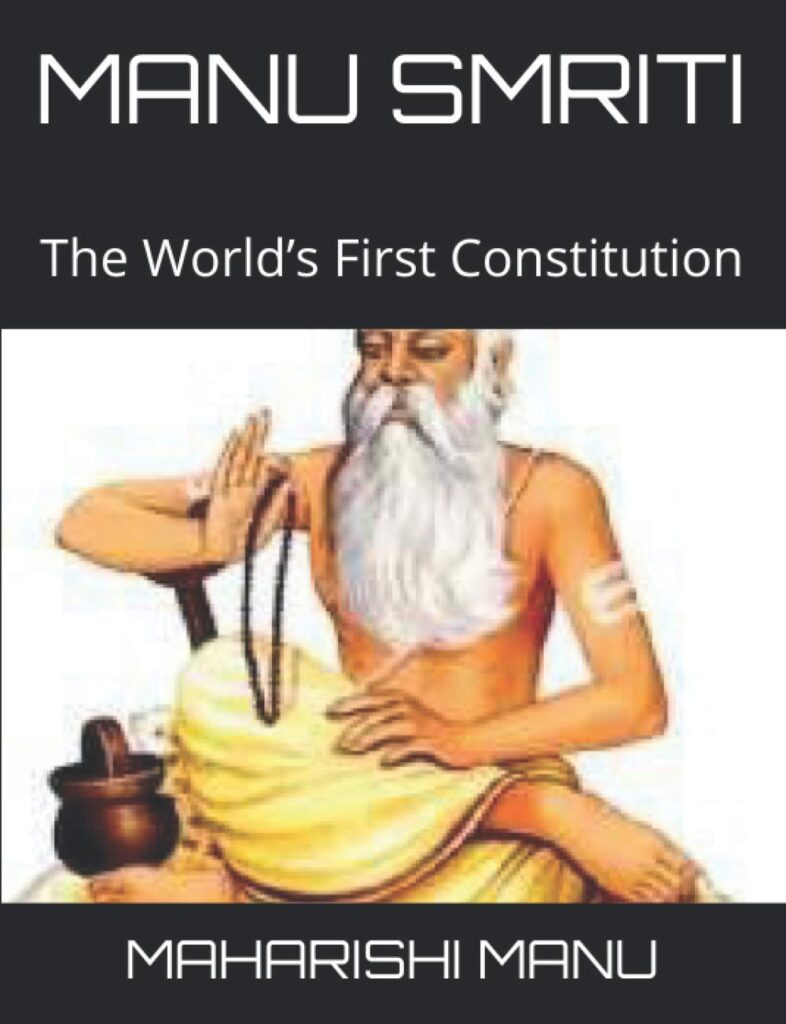Manusmriti the hindu law book is one of the oldest Hindu written scriptures available to man. It is also known as the Dharmasastra and has always been Manusmriti the hindi law book. It covers a wide range of topics such as education, marriage, social structure, and even the duties and responsibilities of every individual in various stages of their life. It was written by Mehrishi Shraddhadeva Manu. He is considered to be the first of Brahma’s sons and the precursor of human civilization therefore it is difficult to find the exact time period of Manusmriti. The word Manushya, Manav, etc are also associated with Manu.
Manusmriti the hindu law book gives detailed information on how one should perform an action according to Varnashram.
Varnashrama is made up of two words. Varna i.e. the 4 social divisions and Ashram i.e. the 4 stages of life.
The 4 Varnas are
- Brahmana – Priests, teachers, the learned men
- Kshatriya – warrior, protector
- Vaishya – businessmen
- Shudras – artisans, workers
These 4 Varnas which most people interpret as castes were not hereditary or were forced on one from birth but were totally dependent on the karma yoga of an individual..


According to Manusmriti 1065 “A Brahmin can become a Shudra and a Shudra can become a Brahmin through his Karma and qualities.
According to Manusmriti 10:65 “A Brahmin can become a Shudra, and a Shudra can become a Brahmin through his Karma and qualities”

If a person realises his mistakes and works and work on to improve them he can get back to his Varna again.
Both of these shlokas shows about the equality that prevails in ancient India
The 4 Ashrams-
- Brahmacharya – Student life
- Grihastha – to create family
- Vanaprastha – retired, life spending in the forest leading to sanyasa
- Sannyasa – ascetic, renunciation of material desires and prejudice
Manusmriti also laid emphasis on Moksh which is the ultimate goal for all human beings.
Therefore you can say that Manusmriti is the combination of Physical and Spiritual knowledge consisting of theology, ethical values for every individual in the society.
Manusmriti was inspired from Vedas as it has mentioned in one of its verses –
Manu 2: 6 -
वेदोऽखिलो धर्ममूलं स्मृतिशीले च तद्विदाम् ।
आचारश्चैव साधूनामात्मनस्तुष्टिरेव च
Vedoakhilo dharmamulam smritishile ch tadvidam
Acjarshaiv sadhunamatmanasturishchev ch
Which means The entire Veda is the root-source of Dharma; also the Conscientious Recollection of righteous persons versed in the Veda, the Practice of Good (and learned) Men, and their self-satisfaction (Commentary by Medhatithi)
This shloka of Manusmriti taken was from Atharva Veda suggests that just like boys who after completing their studies gets eligible for marriage and choose the girls of their choice the same goes for girls , they have all the right to study and stay Brahmacharya (Ashram 1) until they decide to get married with their desired partner.
Such were the rights and freedom prevailed in Ancient India. There are much more references which tells us about the society of that era. Unfortunately hindu scriptures such as Manusmriti, Vedas, Ramayana, Mahabharata etc have been greatly altered through the passage of time which means most of the parts have been added much later according to the belief system of that time. Parts which were original were often misinterpreted and presented in a wrong way by many historians. Most of the authors who have translated these scriptures in English and any other foreign language are the most misinterpreted so these sources cannot be trusted completely as they are unable to tell the difference between the original texts and the texts which were added later.
The Problem with Manusmriti
In today’s time most of the people don’t know Sanskrit so they prefer to read it in English or Hindi. Most of the translation in any other language changes the original meaning of the text which made Manusmiti a highly controversial book. The English translation of Manusmriti was mostly done by Western scholars who didn’t had much knowledge of India society apart from knowing the ancient language, Sanskrit..
I will be sharing more articles on Manusmriti regarding the controversies and also the aspects which are even suitable in today’s era and should be followed.
